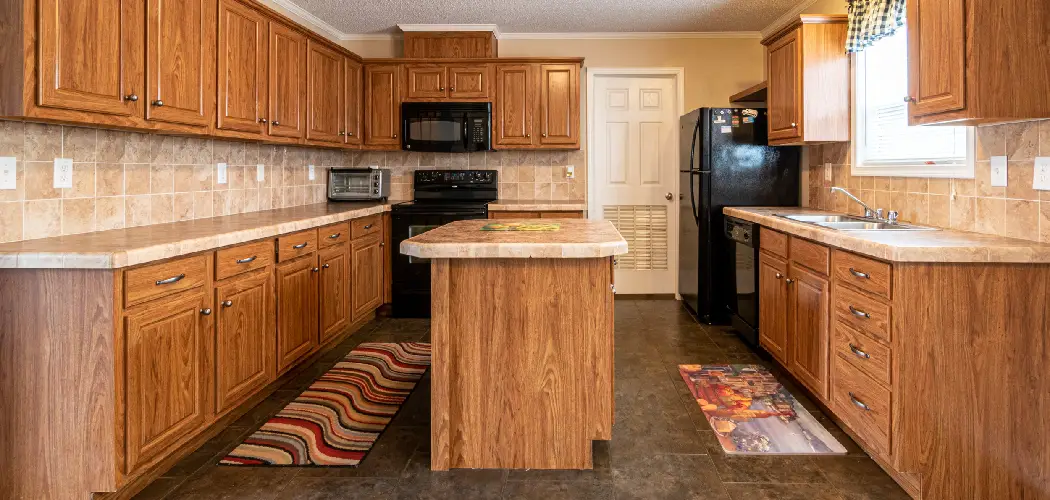Are your oak cabinets looking dull and tired? Do you want to give them a facelift but don’t know where to start? Resurfacing your oak cabinets can be an easy DIY project, and it’s the perfect way to breathe life back into a kitchen or bathroom without having to replace the entire cabinet set. Not sure where to begin with this home improvement process?
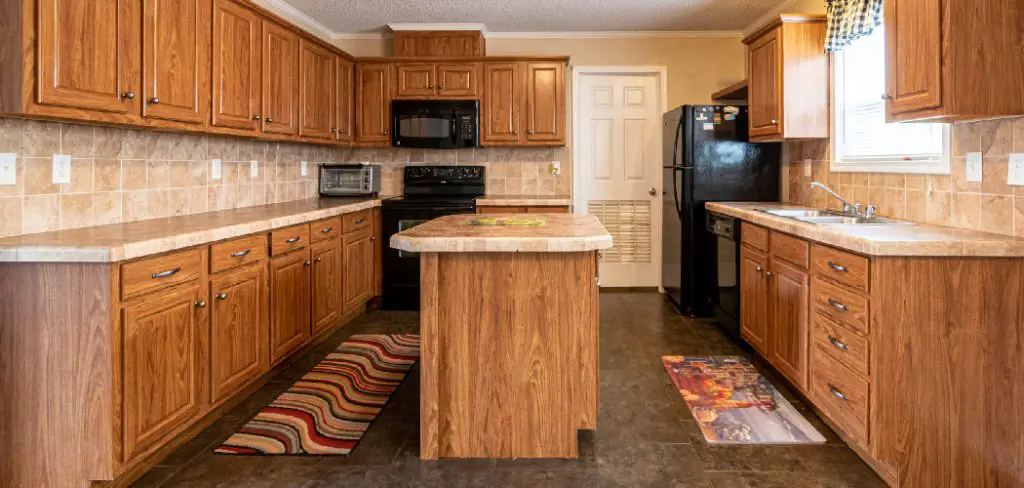
Don’t worry – with our step-by-step guide, you’ll learn how to resurface oak cabinets in no time! Ready for a remodeled look that won’t break the bank or require weeks of hard labor? Read on for more details about recreating beautiful surfaces on existing cabinetry.
Why Resurface Cabinets
Before we dive into the resurfacing process, let’s discuss why you should choose this option for your cabinets. First and foremost, resurfacing oak cabinets is a cost-effective way to give your space an updated look.
Replacing cabinets entirely can be expensive and time-consuming but by resurfacing them, you can achieve a similar effect at a fraction of the cost. Additionally, resurfacing involves minimal disruption and mess compared to other renovation methods.
Materials Needed
To successfully resurface your oak cabinets, you’ll need some essential materials. These include:
- Sandpaper (Medium and Fine Grit)
- Tack Cloth
- Paint or Stain of Your Choice
- Paintbrushes/rollers
- Polyurethane Sealer (for Painted Cabinets)
- Varnish (for Stained Cabinets)
- Screwdriver (if You Plan to Replace Hardware)
- Drop Cloths/sheets to Protect Surfaces
- Painter’s Tape
- Gloves and Safety Goggles
11 Step-by-step Guidelines on How to Resurface Oak Cabinets
Step 1: Empty the cabinets
Before you begin, it’s essential to remove all items from inside your cabinets. This will give you an empty canvas to work with and prevent any damage or stains on your belongings.
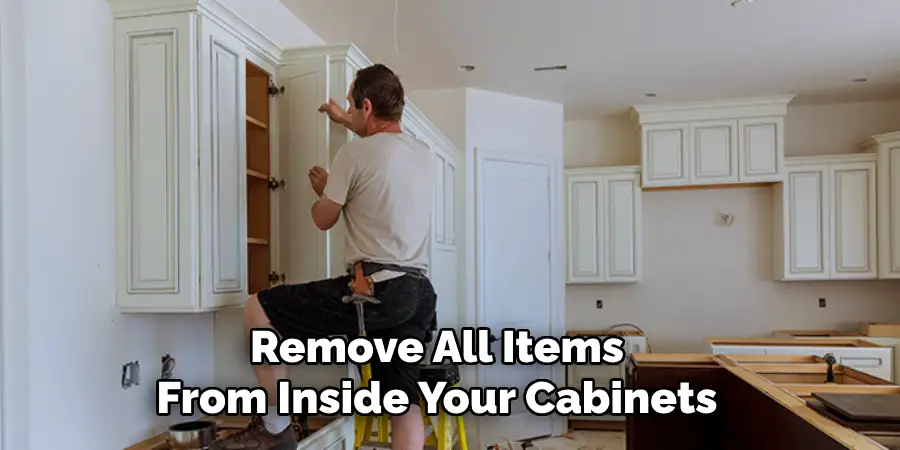
It would also be helpful to label or number the doors and their corresponding cabinets, so you know where each one goes when it’s time to reassemble. You may also want to remove the doors if you are planning on replacing or painting them separately.
Step 2: Clean and Degrease
Proper preparation is crucial for a successful resurfacing job. Using a degreaser, thoroughly clean the cabinets to remove any dirt, dust, or grease buildup. This step will ensure that the new finish adheres properly and lasts longer. It would help if you also sanded any rough or uneven areas. This will help create a smooth surface for the new finish. It’s recommended to use medium grit sandpaper for this step.
Step 3: Remove Old Finish
Using fine-grit sandpaper, remove the old finish from your cabinets. This will help create a surface that is more receptive to the new paint or stain. Be sure to wipe away any dust with a tack cloth before moving on to the next step. It’s essential to have a clean and dust-free surface before applying the new finish. But be careful not to sand too much and damage the wood.
Step 4: Tape Off Surfaces
Use painter’s tape to protect any surfaces you don’t want to get paint or stain on. This includes walls, countertops, and floors. Be sure to apply the tape carefully and remove it once you’re finished painting or staining while the finish is still wet.
It’s easier to achieve clean lines this way. It would also be helpful to cover the surrounding areas with drop cloths or sheets. This will protect from any accidental spills or drips.
Step 5: Apply Primer (optional)
If you’re planning on painting your cabinets, it’s best to apply a primer first. This will help the paint adhere better and provide a more professional finish. Be sure to use a high-quality primer that is suitable for your chosen paint type. It’s also essential to let the primer dry completely before moving on to the next step. It’s usually recommended to wait at least 24 hours.
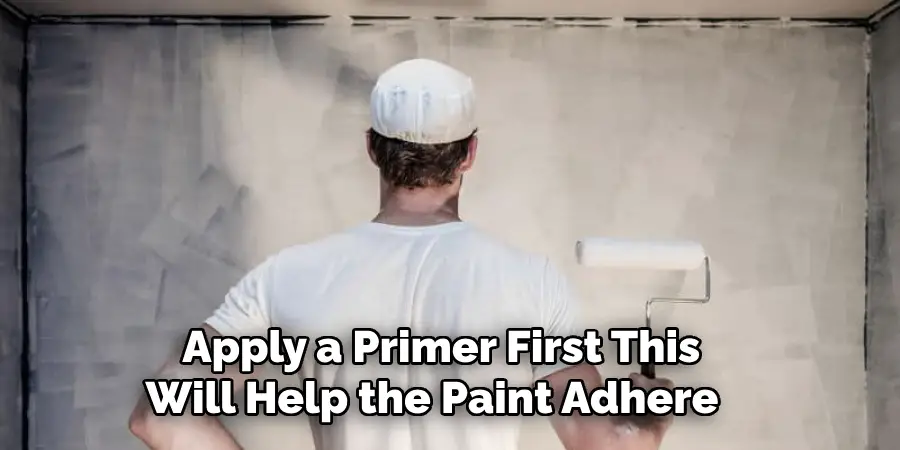
Step 6: Paint or Stain
Now, it’s time for the fun part – painting or staining your cabinets. Use a high-quality paint or stain and apply it with a brush or roller. It’s recommended to use multiple thin coats instead of one thick coat for a smoother finish.
Be sure to follow the instructions on the product label for drying times and techniques. Don’t forget to paint both sides of any removable doors as well. If you’re using a darker hue, you may need to apply multiple coats for complete coverage.
Step 7: Allow Drying Time
After painting or staining, be sure to allow enough time for the finish to dry completely. It’s best to wait at least 24-48 hours before moving on to the next step. This will ensure that the finish has cured and is ready for the final steps. It’s also essential to keep the area well-ventilated during this time. But be patient – proper drying time will result in a better finish.
Step 8: Apply Polyurethane or Varnish
Once your cabinets are dry, you can seal them with a protective finish. If you paint your cabinets, use a polyurethane sealer to protect the paint and give it a glossy finish. For stained cabinets, use varnish for a beautiful shine. Be sure to follow the instructions on the product label and apply multiple coats if necessary. It’s essential to let each coat dry before applying the next one. You can also lightly sand in between coats for a smoother finish.
Step 9: Replace Hardware (optional)
If you plan on updating your cabinet hardware, now is the time to do so. Use a screwdriver to remove the old hardware and replace it with new ones of your choice. This will add an extra touch of modernity to your resurfaced cabinets.
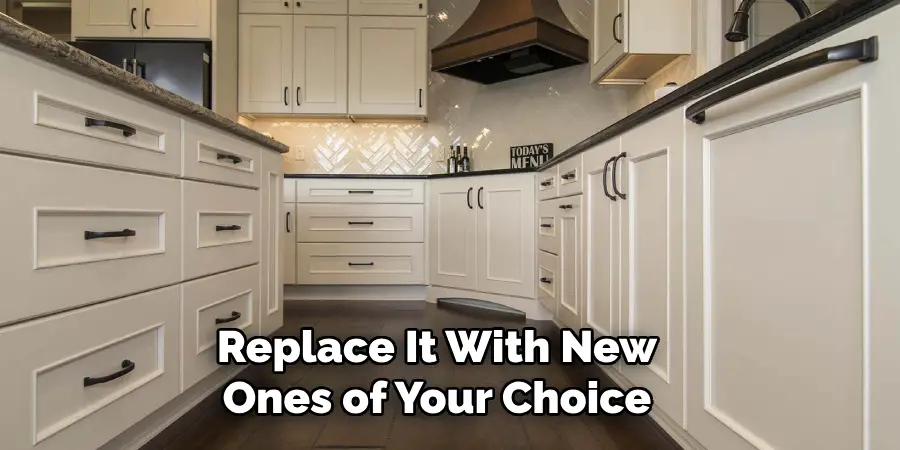
It’s also a good idea to fill in any old hardware holes with wood filler and sand them smooth before installing the new hardware. Always be sure to double-check the placement before drilling any new holes.
Step 10: Reassemble Cabinets
Once all the coats have dried, it’s time to put everything back in place. Reattach any doors you removed earlier and replace any items you took out from inside the cabinets. Be sure to double-check that everything is back in its proper place before moving on to the final step. It’s also an excellent opportunity to declutter and organize your kitchen items. But don’t rush – take your time to make sure everything is back in order.
Step 11: Admire Your Newly Resurfaced Cabinets
Congratulations! You’ve successfully resurfaced your oak cabinets and transformed your space. Take a moment to admire your handiwork and enjoy your updated cabinets. Remember to properly maintain them by regularly cleaning and avoiding harsh chemicals for a long-lasting finish. And if you ever want to change up the look again, now you know how easy it is to resurface oak cabinets!
Following these step-by-step guidelines on how to resurface oak cabinets and professional-looking finish. Whether you choose to paint or stain, your cabinets will look brand new and add value to your home. So don’t be afraid to give it a try and update the heart of your home!
Do You Need to Look for Professional Help?
Resurfacing oak cabinets is a manageable DIY project, but it does require time and effort. If you don’t have the necessary skills or tools, it may be best to hire a professional to do the job for you. They will guarantee a high-quality finish and save you from any potential mistakes or damages. Plus, they can offer expert advice on choosing the right materials and colors for your cabinets.
Additionally, if your cabinets are in poor condition, it may be best to replace them entirely instead of resurfacing them. A professional can help assess the state of your cabinets and provide recommendations accordingly.
Frequently Asked Questions
Q1. Can I Resurface My Cabinets Without Removing Them From the Wall?
A1. Yes, you can leave your cabinets in place while resurfacing them. However, it will be more challenging to achieve a professional finish and may require more time and effort. It’s recommended to remove the cabinets if possible for better results.
Q2. Can I Resurface My Cabinets With Different Types of Paint or Stain?
A2. Yes, you can use different types of paint or stain on your cabinets. Just be sure to choose high-quality products that are suitable for wood surfaces and follow the instructions on the product label for the best results.

Q3. How Often Should I Resurface My Cabinets?
A3. The frequency of resurfacing depends on several factors such as usage, wear and tear, and personal preference. On average, it’s recommended to resurface oak cabinets every 5-10 years to maintain their appearance and protect them from damage.
Q4. Is It Better to Paint or Stain My Cabinets?
A4. It is a matter of personal preference and the desired look for your space. Paint provides more color options and can hide imperfections better, while stain enhances the natural wood grain and offers a more traditional look. Consider your style and home decor when making this decision.
Conclusion
Overall, refinishing any furniture is a great way to add life to any home. This holds true for oak cabinets too. With the right supplies and steps, these will look their best in no time. Refacing on your own is an option, but may require more labor than anticipated. For those who are interested in a professional job done within a reasonable amount of time, hiring an experienced knowledgeable contractor is the best course of action.
Whether you do it yourself or hire someone else, be sure to follow all the necessary instructions and safety precautions when resurfacing oak cabinets for optimal results. Now that you have all the information needed to refurbish your oak cabinets successfully, go ahead and give it a try! With the help of this guide on how to resurface oak cabinets, your efforts will undoubtedly pay off in the end with stunning oak cabinets that you can be proud to show off for years to come!

